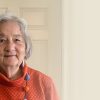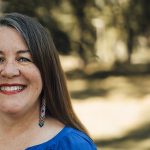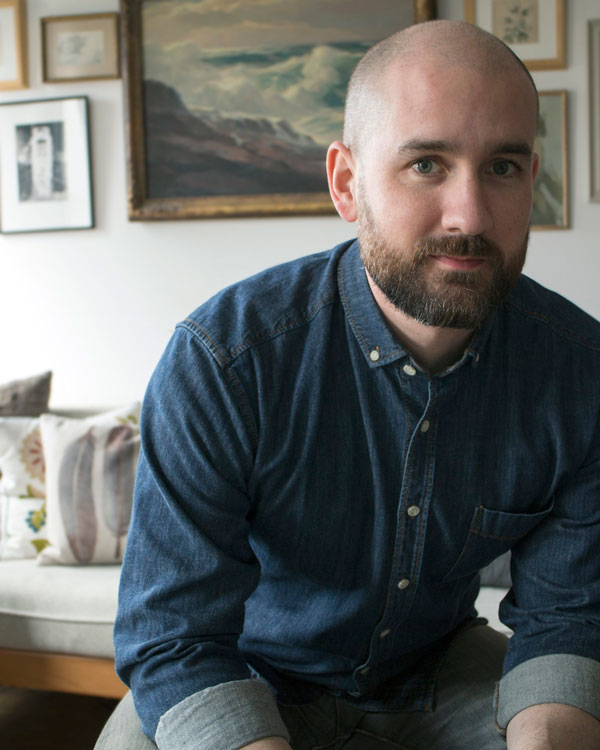
Peter Brown’s mix of adventure, humor, and timely insights have turned his Wild Robot series of illustrated middle grade novels into bestsellers. The third installment, The Wild Robot Protects (Little, Brown), was warmly welcomed by both fans and critics alike in September of 2023. And the audience for his books is expected to grow even larger with the announcement that DreamWorks is releasing an animated film based on the first title, The Wild Robot (Little, Brown, 2016), scheduled for September 2024. Brown is also the recipient of a Caldecott Honor for his illustrations for Creepy Carrots! (written by Aaron Reynolds, Simon & Schuster, 2012), and is the author/illustrator of several kid-favorite picture books including The Curious Garden (Little, Brown, 2009), Children Make Terrible Pets (Little, Brown, 2010), and Mr. Tiger Goes Wild (Little, Brown, 2013).
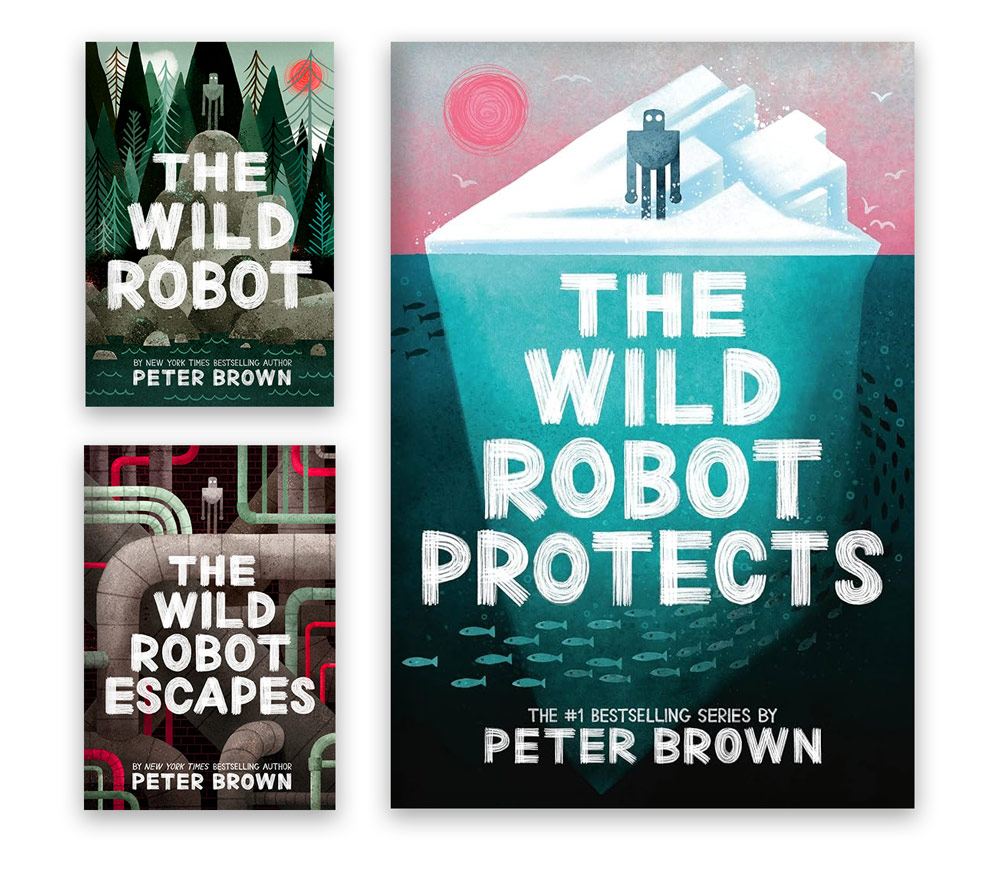
Here, Brown talks with Lisa Bullard about his enthusiasm for research, his contrasting approaches to illustrating picture books versus illustrated novels, and his favorite moment in the bookmaking process.
The Wild Robot Protects is the third title in your series that melds both nature and technology. This new title takes young readers on a wild adventure while also challenging them with some tough but nuanced questions about the risks that progress can pose to the environment. What else would you like to say about the books?
There are several big themes running through the Wild Robot series. One theme is the idea of home. In the first book, Roz makes a home for herself in the wilderness. In the second book, Roz tries to escape from civilization and find her way back to her home. In the third book, Roz must protect her home from a mysterious form of pollution, which the animals call the poison tide. This leads me to another theme in the books, about how the natural world is affected by human activity and human technology. Roz herself is a form of human technology, one who has a positive impact on her environment. But of course, there are other examples of human activity having negative effects, and I wanted to imagine just how far the wild robot would go to protect her beloved home from her own kind.
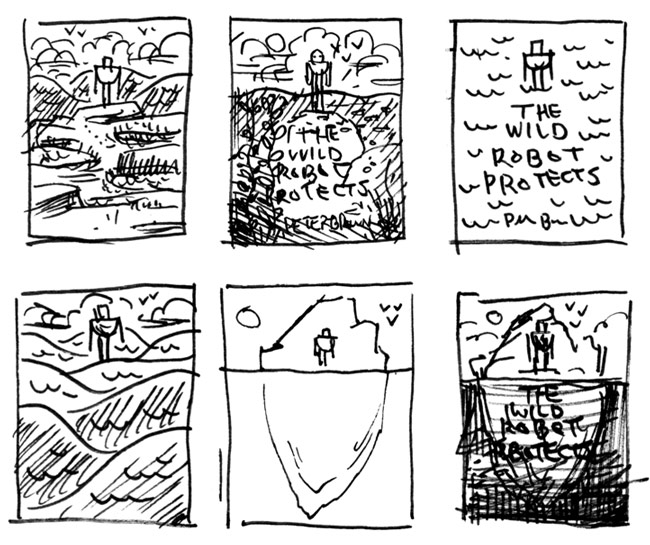
In this latest book, Roz journeys to a part of the world few people have had the chance to visit—something that obviously required both imagination and research from you as her creator. How do you feel about the research part of the writing process?
I grew up watching nature documentaries on TV, like those hosted by David Attenborough, and I still find those shows endlessly fascinating. These days, I have nature docs playing while I’m working, or when I’m researching, or I’ll just sit down and watch them for fun. I also read tons of nonfiction books on subjects like evolution, animal behavior, and the delicate balance of ecosystems. I enjoy research because I’m fascinated by the subjects I’m studying.
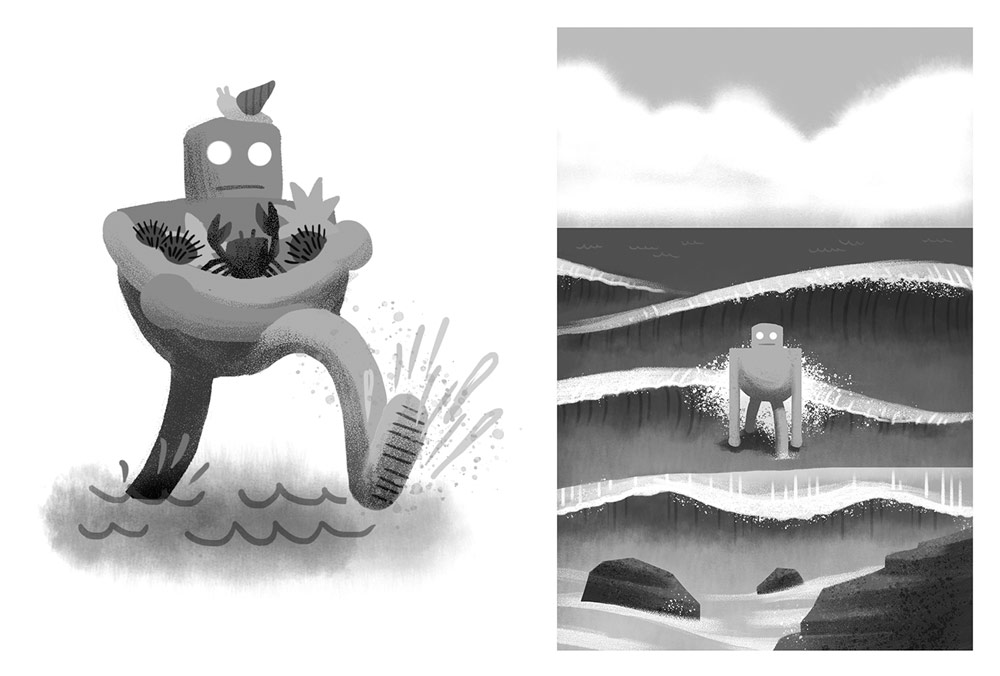
What advice do you have for young readers who need to do research for their own reports?
My advice to any young person doing research is to try to find a way to get excited about the subject. That isn’t always easy, I know. But the universe is vast and mysterious and interconnected, and if you’re open to it, I think you’ll find that almost any subject can be interesting. Once you’re in that mindset, researching will come much more easily. And if that doesn’t work, maybe try new ways of researching. Watch a documentary movie, or listen to a podcast, or find an expert on the subject whom you can interview. I find that experts are really good at making their subject fascinating to us normal people.
The universe is vast and mysterious and interconnected, and if you’re open to it, I think you’ll find that almost any subject can be interesting.”
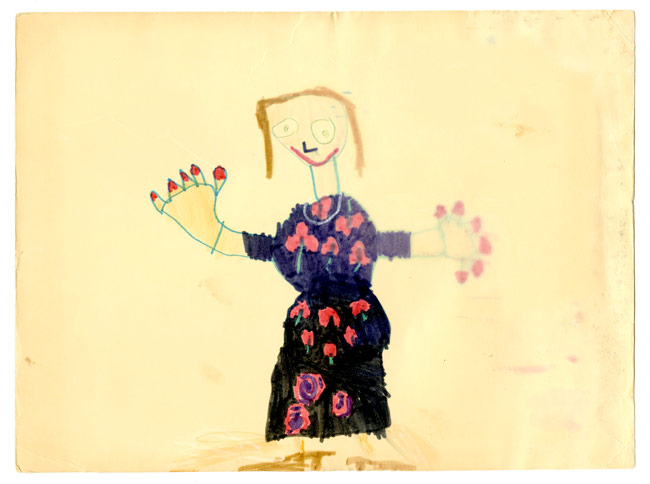
How did your experiences growing up inform your work and the approach you take to creating books?
Growing up, I was lucky to have a mom who really loved my creativity. She enrolled me in all kinds of extra-curricular art classes, and at a young age I started feeling like I could grow up to be a real artist. I took art seriously, I practiced, and I got better. Seeing my skills gradually improve was extremely motivating, and it made me want to practice even more. I especially loved animated movies, and so I practiced drawing my favorite characters, and I invented lots of my own characters.
But in art college I took a class on writing and illustrating kids’ books, and I knew I’d found my calling. Creating a children’s book is a lot like creating an animated film, except instead of being one little part of a huge film crew, I get to be the writer and the director and the costume designer and the lighting technician and the scene decorator and so on. It’s a lot of work, but it is very satisfying to create a visual story just how I want it.
At a young age I started feeling like I could grow up to be a real artist. I took art seriously, I practiced, and I got better.”
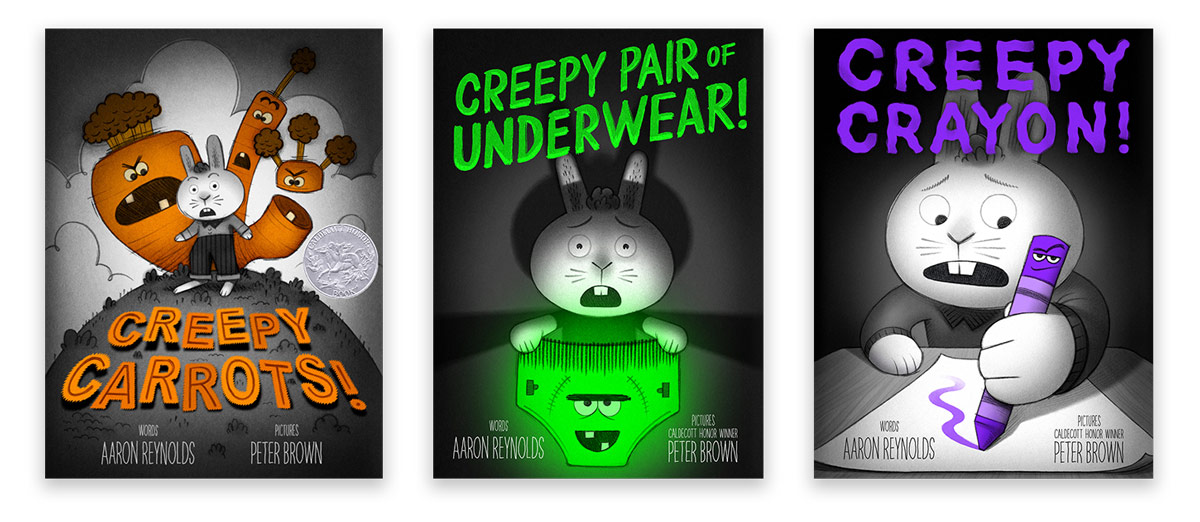
Like with your picture book titles, your illustrations for this middle grade series add a whole new element to readers’ understanding of the stories. Could you lead students through a compare/contrast exercise focused on your process for creating picture books versus illustrated novels?
When creating picture books, I tend to bounce back and forth between writing words and sketching out scenes. A little doodle might give me a story idea, and so I put down my sketchbook and start working on the text for a while. Then, as I’m writing, an image might pop into my mind, so I’ll pick up my sketchbook and start drawing again. It’s a messy process, but it’s really exciting when a story starts taking shape.
For illustrated novels, I typically just focus on the words for months and months (sometimes years) before I begin thinking about the art. My novels are much longer and more complicated than my picture books, and the plot can change so much from the start to the end of the process that I don’t want to waste too much time sketching scenes that might not make it into the finished book. So, I wait until the written story is in pretty good shape before I start sketching scenes.
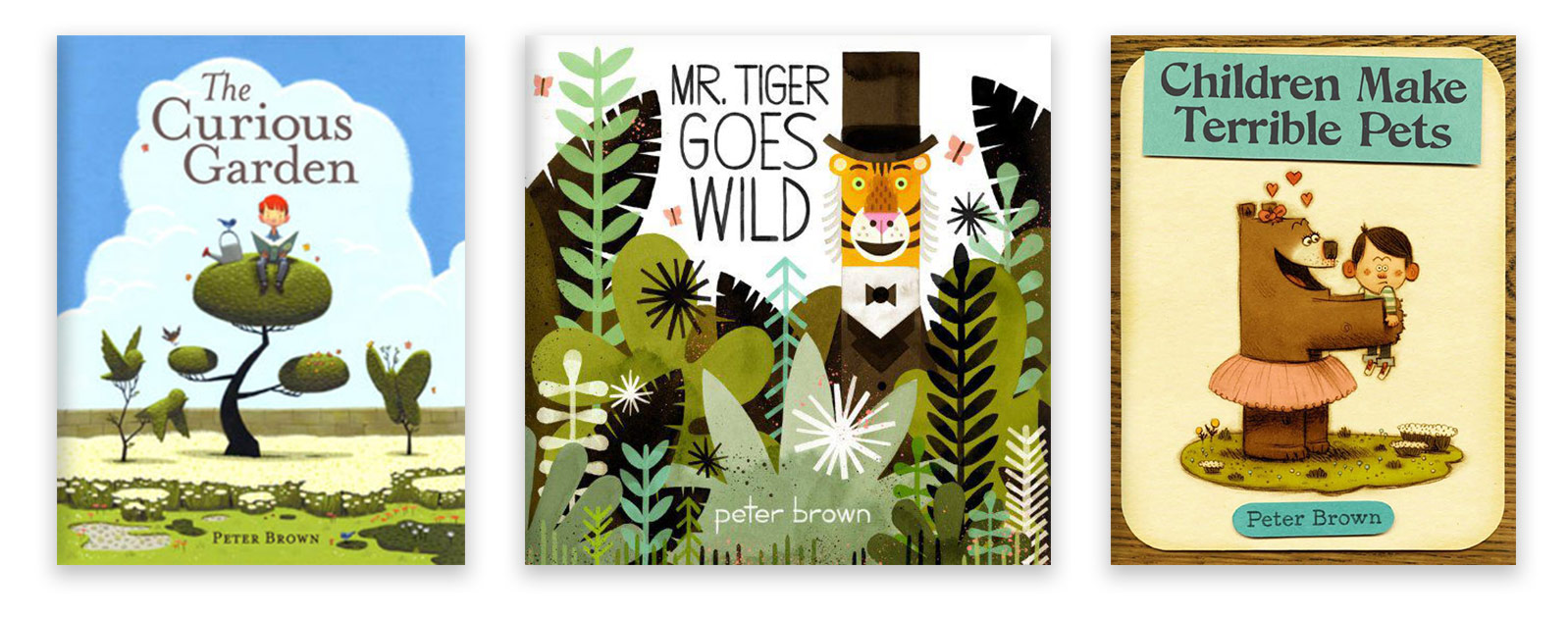
Are there other differences for you when it comes to illustrating picture books versus middle grade titles?
The pictures in a picture book need to tell most of the story, and you can be very experimental with how the words and pictures play off each other. The pictures can even directly contradict the text, to add humor or tension. The challenge in making picture books is to come up with creative, surprising ways to combine words and pictures so that each is essential to the story experience. Because I’m particularly focused on making things clear for my readers, I’ve come up with a fairly simple art style, where I overlap simple shapes to create the characters and settings. No confusing compositions, no tiny details.
In an illustrated novel, however, the words tell almost the entire story, and the pictures are there to reinforce what’s happening in the text. I don’t get too experimental when illustrating novels. I try to depict scenes in a way that is visually interesting, but my main goal is to make sure it’s perfectly clear what is happening in each scene.
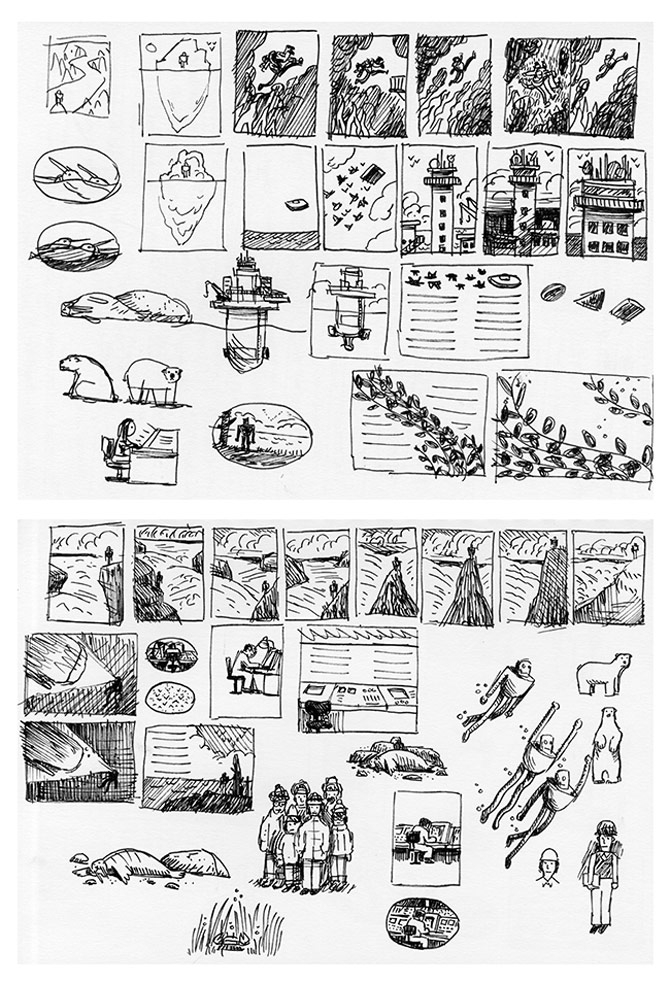
What’s your favorite moment of the book-creation process?
I love the early phase of making books, when I have a little nugget of an idea that could end up being something great. Sometimes I just sit for a minute and enjoy that feeling of having an interesting idea before I dive in and do the hard work of turning the idea into an actual story.
Sometimes I just sit for a minute and enjoy that feeling of having an interesting idea before I dive in and do the hard work of turning the idea into an actual story.”
Students often struggle with revising. Can you talk a bit about how many times you end up revising your work?
I enjoy revising because I enjoy getting every little detail in a story just right. I can’t even begin to guess how many drafts I wrote of each Wild Robot book, because it’s a constant ongoing process of rereading and editing and revising. Each time I read through a draft of the story I make more improvements, until finally, I can read through an entire draft without needing to make any changes.
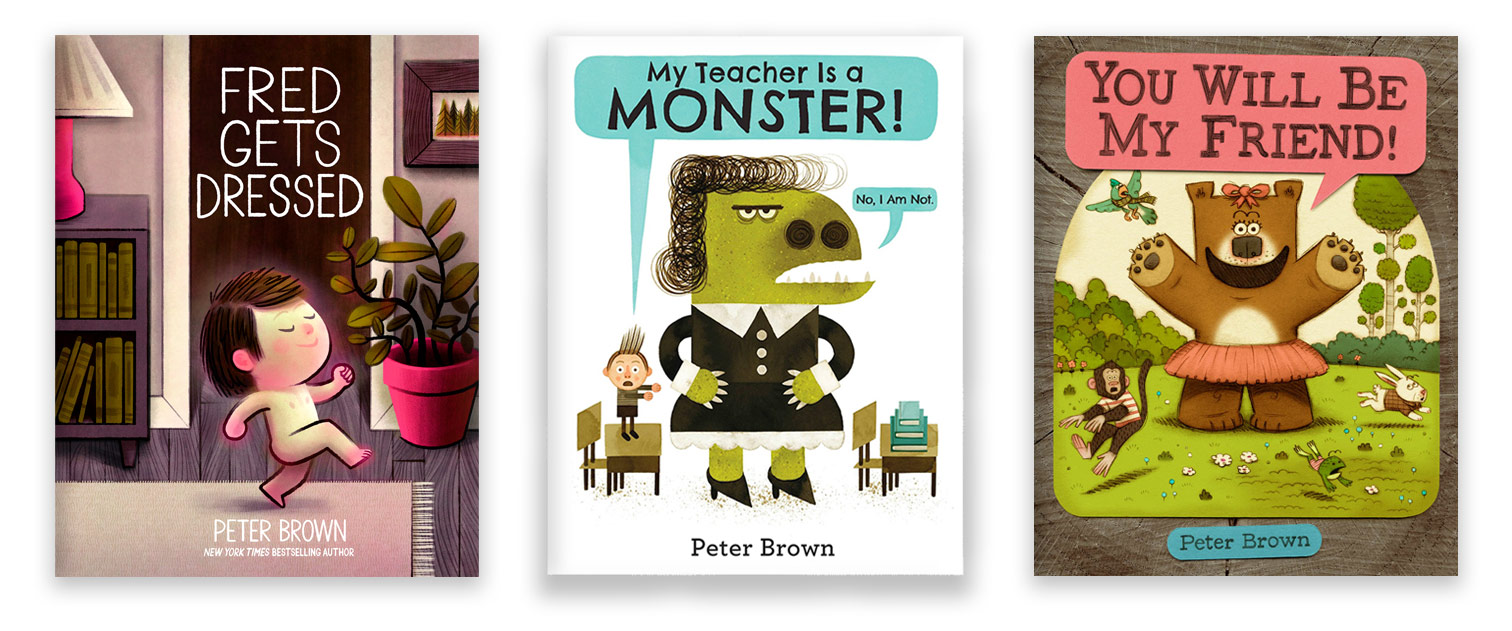
Do you have any tips to offer students to help them do more effective revisions of their own?
It’s hard in school because students often must write about subjects that don’t really interest them. The best advice I can give is to try to find a way to be interested in whatever you’re writing about. When you really are interested in the subject, writing about it and revising your work is much more fun. Another useful trick is to read your writing out loud to yourself. It can feel a little funny at first, but when you hear how your words sound aloud, you can really find where the wording is a little clunky or confusing, and then you can fix the problem.
Read your writing out loud to yourself. It can feel a little funny at first, but when you hear how your words sound aloud, you can really find where the wording is a little clunky or confusing.”
What’s your best advice for young readers who want to be artists and/or writers?
If you want to be a writer, read a lot of books! I learn so much about who I want to be as a writer by reading other authors and thinking about the choices they make. If you want to be an artist, look at a lot of art! I learn so much about who I want to be as a visual artist by looking at the work of other artists and thinking about the choices they make.
What would you like to tell your fans about your forthcoming projects?
There’s more Wild Robot stuff coming! And The Wild Robot movie is scheduled to hit theaters in the fall! And more Creepy Tales! books (my picture book series with Aaron Reynolds) are on the way! Plus, I have some all-new book ideas that I can’t wait to dig into. Busy times!
What are the best ways for educators and librarians to connect with you or to follow you on social media?
I have accounts on Instagram, Threads, Twitter (I guess we’re calling it X now?), and Facebook. But the best way to contact me is to go to my website, www.peterbrownstudio.com, and send me an email.



